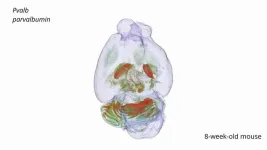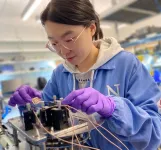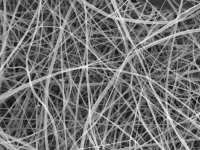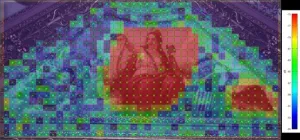Unveiling nature of metal-support interaction: AI-driven breakthrough in catalysis
2024-11-21
(Press-News.org)
How can Artificial Intelligence (AI) help accelerate scientific discovery based on vast amounts of experimental data? A new study by Prof. LI Weixue's team from the University of Science and Technology of China (USTC) of the Chinese Academy of Sciences shows how this can be achieved in heterogonous catalysis. The results were recently published in Science.
By integrating interpretable AI with experimental data, domain knowledge, and first-principles simulations, the researchers established a general theory of metal-support interaction (MSI), which is one of the most important pillars in catalysis.
Supported metal catalysts have been widely used for petrochemical refining and industrial chemical manufacturing as well as environmental control systems such as exhaust catalysts. MSI helps stabilize dispersed catalysts and impacts interfacial processes such as charge transfer, chemical composition, perimeter sites, particle morphology, and suboxide encapsulation. Modulation of MSIs is thus one of the few strategies for enhancing catalyst performance.
For example, strong MSIs, which were originally used to describe the encapsulation of supported metal nanoparticles by suboxide layers at elevated temperatures—a discovery made in 1978—have received much attention recently and have been thought of as the origin of many prominent interfacial processes. However, fundamental questions remain about the nature of (strong) MSIs and their influence on interfacial processes in general and encapsulation in particular, due to the intricate interfaces and complex processes involved.
In this study, Prof. LI's team made a breakthrough on this issue. LI envisioned that a concise formula for accurately describing and predicting the strength of MSI should exist. The team then compiled consistent experimental data from previous seminal research covering 25 metals and 27 oxides. Using advanced interpretable machine learning algorithms, combined with domain knowledge and theoretical derivation, the team identified a formula to predict MSI from basic and easy-to-obtain material parameters.
This concise formula revealed that MSI strength is the sum of the metal-metal and metal-oxygen interactions across the interface. The metal-metal interaction, a surprisingly novel quantity but not recognized before, contributes significantly to MSI relative to the widely acknowledged metal-oxygen interaction. The proposed formula exhibits remarkable universality. It can be applied not only to oxide-supported metal nanoparticle catalysts but also to metal single-atom catalysts and metal-supported oxide catalysts. This finding highlights that metal-metal interaction is the key factor in support effects, opening a new avenue for understanding and engineering such support.
Further large-scale molecular dynamic simulations based on neural-network potentials revealed that this metal-metal interaction also determines kinetic rates of oxide encapsulation over metal catalysts and the proportion of metal-metal bonds at the encapsulation interface. Based on these findings, the team proposed a principle of strong metal-metal interaction describing the occurrence of encapsulation, which not only explains nearly all observed encapsulation phenomena but also predicts new systems yet to be discovered. The principle of strong metal-metal interaction in encapsulation can be extrapolated to the encapsulation of other metal compound supports, providing theoretical guidance on interface design and engineering.
"This achievement resolves a major fundamental scientific challenge in heterogeneous catalysis and provides immense potential for the design of efficient supported catalysts," said Academician LI Yadong from Tsinghua University.
"This breakthrough is expected to accelerate the discovery of new catalytic materials and reactions, advancing the field of catalysis in energy, environment, and material science, thereby contributing to the sustainable development of society," said Prof. LI Weixue.
This study shows the potential of integrating interpretable AI algorithms with domain knowledge to build mathematical models and extract scientific principles based on vast amounts of historical experimental data. In this way, the study offers a novel perspective on scientific discovery in chemistry in the age of "AI for Science."
END
ELSE PRESS RELEASES FROM THIS DATE:
2024-11-21
Researchers at Karolinska Institutet and Karolinska University Hospital have developed a groundbreaking microscopy method that enables detailed three-dimensional (3D) RNA analysis at cellular resolution in whole intact mouse brains. The new method, called TRISCO, has the potential to transform our understanding of brain function, both in normal conditions and in disease, according to the new study published in Science.
Despite great advances in RNA analysis, linking RNA data to its spatial context has long been a challenge, especially in intact 3D tissue volumes. The TRISCO method now makes it possible to perform three-dimensional RNA imaging of whole ...
2024-11-21
Northwestern University scientists have developed a new protective coating that significantly extends the life of perovskite solar cells, making them more practical for applications outside the lab.
Although perovskite solar cells are more efficient and less expensive than traditional silicon solar cells, perovskite has, until now, been limited by its lack of long-term stability. Typically, perovskite solar cells uses an ammonium-based coating layer to enhance efficiency. While effective, ammonium-based layers degrade under environmental stress, such as heat and moisure.
Northwestern ...
2024-11-21
The world’s thinnest spaghetti, about 200 times thinner than a human hair, has been created by a UCL-led research team.
The spaghetti is not intended to be a new food but was created because of the wide-ranging uses that extremely thin strands of material, called nanofibers, have in medicine and industry.
Nanofibers made of starch – produced by most green plants to store excess glucose – are especially promising and could be used in bandages to aid wound healing (as the nanofiber mats are highly porous, allowing water and moisture in but keeping ...
2024-11-21
The hippocampus is one of the most fascinating brain regions. Associated with the formation of memories, it also helps us to navigate through the world without getting lost. Sensory cortices on the other hand play an important role in how we perceive our environment and make appropriate movements, and how our brains determine what to focus on and what to ignore. While both regions have been extensively studied and many of their secrets revealed, there is still a lot we do not understand about them due to the high complexity of ...
2024-11-21
MELVILLE, N.Y., Nov. 21, 2024 – Fresco painting, a technique that dates back to antiquity, involves applying dry pigments to wet plaster, creating stunning artwork that can last for centuries. Over time, however, these masterpieces often face degradation due to delamination, where decorative plaster layers separate from the underlying masonry or structural plaster. This deterioration can compromise the structural integrity of the artwork, necessitating restoration efforts.
Historically, conservators have gently knocked on the plaster with their knuckles or small mallets to assess the condition of the fresco. By listening to the emitted sound, they could identify the delaminated areas ...
2024-11-21
In Nature Partner Journals, ten researchers advocate the use of imagination in tackling the climate crisis. They focus specifically on urbanising river deltas, which are of great social and economic importance and highly vulnerable to climate change. "We scientists should not merely outline doomsday scenarios," says Professor Chris Zevenbergen. "Create a vision for people to believe in and work towards.”
From doomscenarios to desired outcomes
Due to the climate crisis, urban river deltas ...
2024-11-21
Archaeologists from the Faculty of Arts at the University of Hong Kong (HKU) are revolutionising the excavation and documentation of ancient sites with cutting-edge 3D immersive technologies.
Archaeology studies the human past through the excavation of things people made and used thousands of years ago – from architecture to objects like pottery bowls and animal bones from meals. Although many excavation projects create digital 3D models of what they uncover, archaeologists need new ways to meaningfully use those data. Some projects share 3D models with the public as tourism and teaching tools – ...
2024-11-21
Photos
Morning glory plants that can resist the effects of glyphosate also resist damage from herbivorous insects, according to a University of Michigan study.
The U-M researchers also found the reverse: plants treated with and susceptible to glyphosate, the active ingredient in the herbicide RoundUp, are also susceptible to damage from insects. This suggests that glyphosate, a herbicide humans have introduced into the environment, can disrupt the co-evolution of plants and their insect herbivores. ...
2024-11-21
MELVILLE, N.Y., Nov. 21, 2024 – Mysterious, repeating sounds from the depths of the ocean can be terrifying to some, but in the 1980s, they presented a unique look at an underwater soundscape.
In July 1982, researchers in New Zealand recorded unidentifiable sounds as a part of an experiment to characterize the soundscape of the South Fiji Basin. The sound consisted of four short bursts resembling a quack, which inspired the name of the sound “Bio-Duck.”
“The sound was so repeatable, we couldn’t believe at first that it was biological,” said ...
2024-11-21
Compared to children, adults don’t play as much, but social play into adulthood is considered a universal human trait. Play has a role in building tolerance, cohesion, bonding, and cooperation. By comparison, play in adults of other species has been considered rare, and yet a new study reported in the Cell Press journal Current Biology on November 21 shows that some chimpanzees, like people, continue to play often throughout their entire lives and especially before engaging in acts that require collective cooperation.
“We show that adult social play in chimpanzees can foster a range of cooperative behaviors, from dyadic interactions to complex, risky ...
LAST 30 PRESS RELEASES:
[Press-News.org] Unveiling nature of metal-support interaction: AI-driven breakthrough in catalysis






